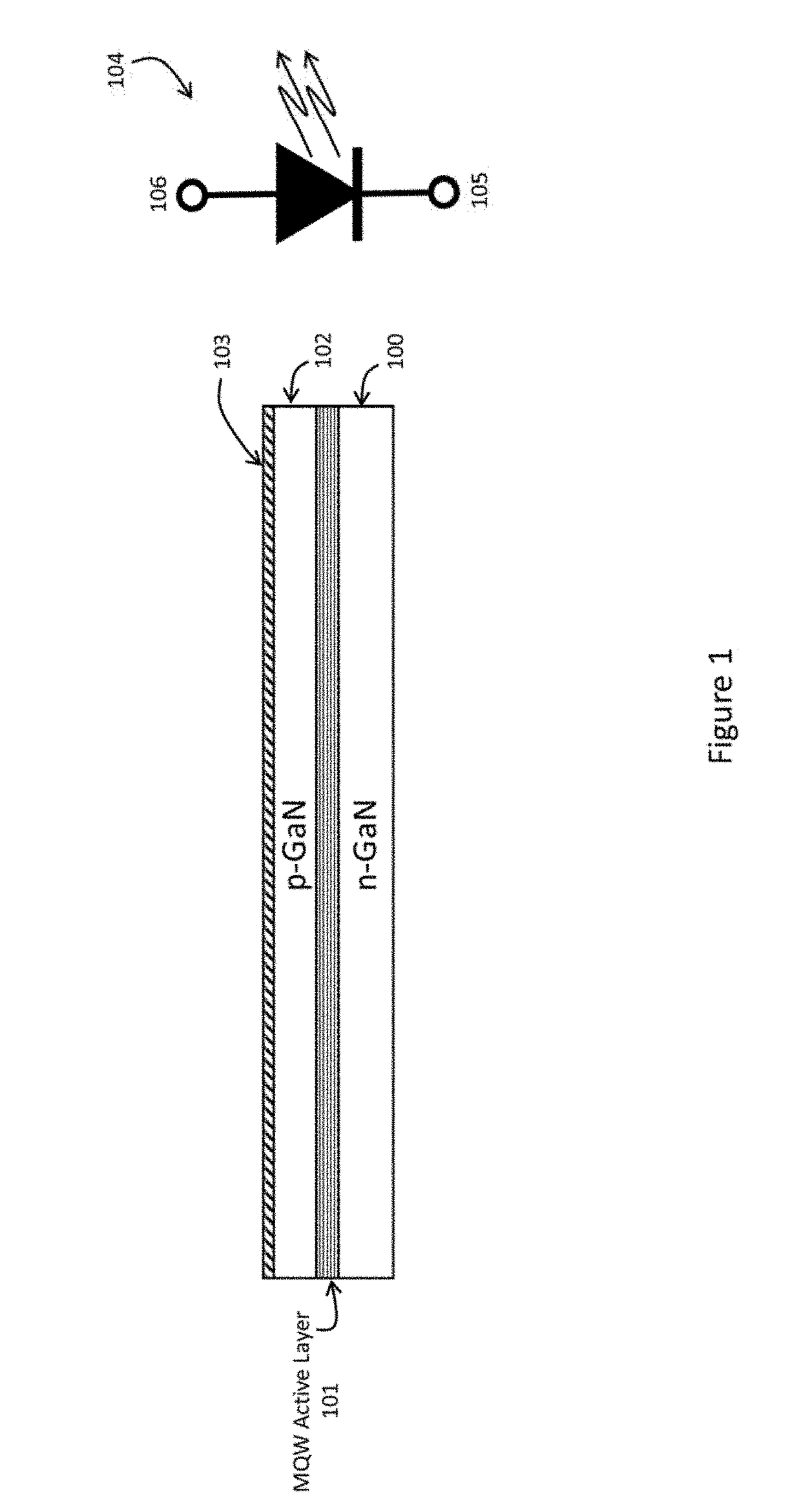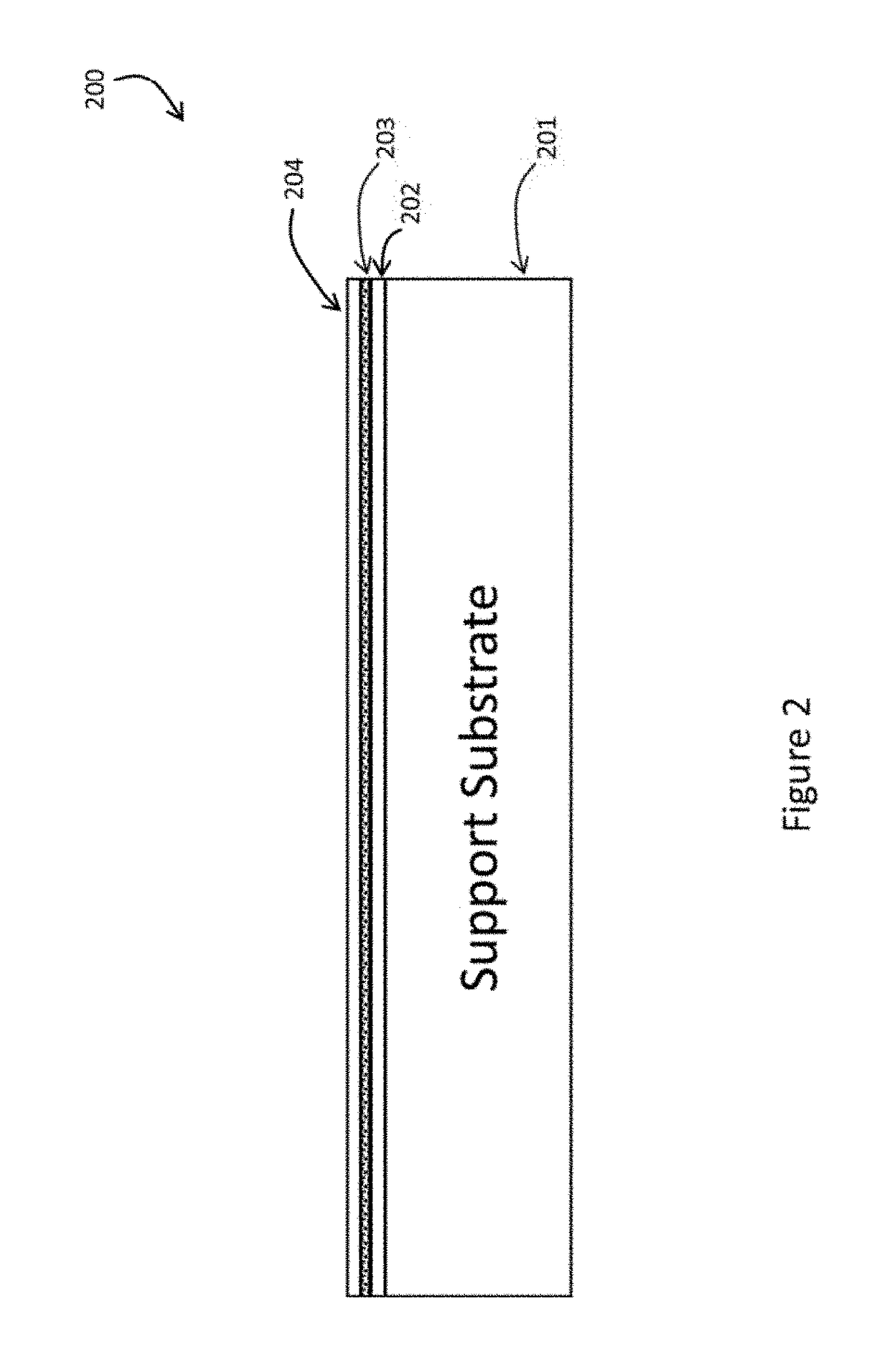Light emitting diode (LED) test apparatus and method of manufacture
a technology of light-emitting diodes and test apparatus, which is applied in the direction of individual semiconductor device testing, semiconductor/solid-state device testing/measurement, instruments, etc., can solve the problems of low yield and reliability of led devices, test reliability, and the fabrication and maintenance costs of probe pin cards having hundreds or even thousands of probe pins, so as to reduce the charge coupling efficiency and speed up the voltage ramp. , the effect of increasing the voltage valu
- Summary
- Abstract
- Description
- Claims
- Application Information
AI Technical Summary
Benefits of technology
Problems solved by technology
Method used
Image
Examples
example 2 (
VARIANT B EXAMPLE 2 (TOP FIELD PLATE GROUNDED CONDITION)
[0187]a. V1=0V[0188]b. V2=−21.375 kV
example 1
VARIANT C EXAMPLE 1
[0189]a. V1=+75V[0190]b. V3=−75V, V2=−14.1 kV
example 2
VARIANT C EXAMPLE 2
[0191]a. V1=+75V[0192]b. V3=−226V, V2=0V
[0193]Although some common-mode charging will occur and higher bottom electrode voltage V2 may be required when example 2 of variant A is used, this embodiment can be particularly useful by only requiring a grounded, nonpatterned field plate for most lateral LED structures.
[0194]In yet another embodiment, the top field plate can have a thicker dielectric and require a higher voltage V1. This may have advantages in lessening top device structure topology effects, facilitate non-contact testing and improve the robustness of the top field plate from slight dielectric imperfections such as scratches and the like. For example, a 200 μm quartz field plate dielectric (element (f) in the previous example) and a 10 um air gap would require for the variant A configuration of FIG. 20 the following voltages:[0195]a. V1=+17.4 kV[0196]b. V2=−28.5 kV
These voltages were chosen to avoid net charge transfer to the devices, essentially keeping...
PUM
 Login to View More
Login to View More Abstract
Description
Claims
Application Information
 Login to View More
Login to View More - R&D
- Intellectual Property
- Life Sciences
- Materials
- Tech Scout
- Unparalleled Data Quality
- Higher Quality Content
- 60% Fewer Hallucinations
Browse by: Latest US Patents, China's latest patents, Technical Efficacy Thesaurus, Application Domain, Technology Topic, Popular Technical Reports.
© 2025 PatSnap. All rights reserved.Legal|Privacy policy|Modern Slavery Act Transparency Statement|Sitemap|About US| Contact US: help@patsnap.com



